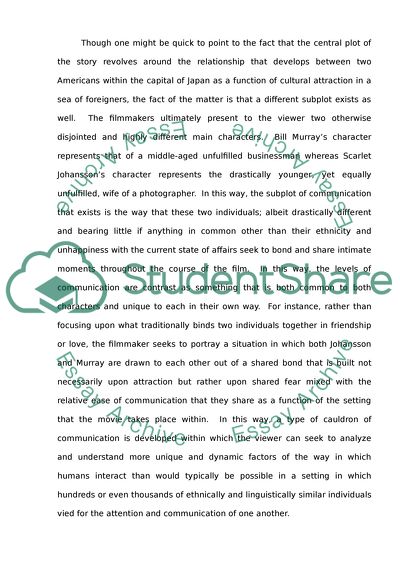Cite this document
(“Lost in Translation: A Communications Centric Analysis Movie Review”, n.d.)
Lost in Translation: A Communications Centric Analysis Movie Review. Retrieved from https://studentshare.org/journalism-communication/1467748-lost-in-translation-a-communications-centric-analysis
Lost in Translation: A Communications Centric Analysis Movie Review. Retrieved from https://studentshare.org/journalism-communication/1467748-lost-in-translation-a-communications-centric-analysis
(Lost in Translation: A Communications Centric Analysis Movie Review)
Lost in Translation: A Communications Centric Analysis Movie Review. https://studentshare.org/journalism-communication/1467748-lost-in-translation-a-communications-centric-analysis.
Lost in Translation: A Communications Centric Analysis Movie Review. https://studentshare.org/journalism-communication/1467748-lost-in-translation-a-communications-centric-analysis.
“Lost in Translation: A Communications Centric Analysis Movie Review”, n.d. https://studentshare.org/journalism-communication/1467748-lost-in-translation-a-communications-centric-analysis.


